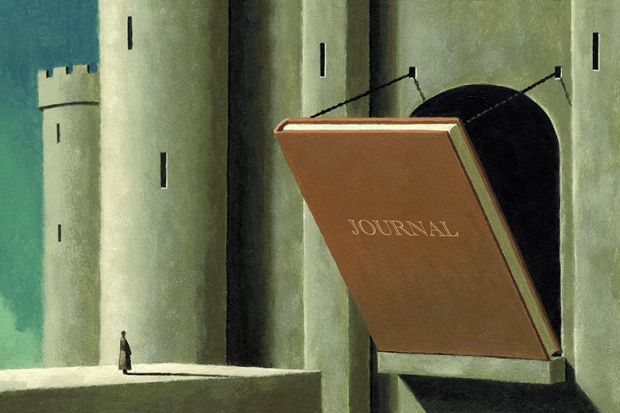Plan S has already been credited with sparking something of a revolution in journal publishing. Major publishers are beginning – slowly and reluctantly in some cases – to replace their traditional “big deals” with what are being called “transformative deals”. Often negotiated with national consortia of libraries and research institutes, these combine access to subscription journals with an ability to publish open access without any additional charge.
However, I believe that we should think a lot harder before celebrating a tipping point.
The open access movement has always been intimately bound up with a critique of the whole concept of handing over billions of pounds of public money to wildly profitable private companies in exchange for publishing papers that are written, reviewed and edited by academics. Yet the current “transformative” deals do precious little to drive down margins that are often in excess of 35 per cent.
For example, Germany recently paid €26 million (£24 million) to Wiley to publish 9,500 open access articles a year over three years, at €2,750 per article. Wiley has an operating profit margin of around 29.5 per cent, which means that about €7.7 million of that fee will go straight into its shareholders’ pockets. A similar deal between Wiley and Dutch universities has an estimated cost of €1,600 per paper, but there are suggestions that it has, in practice, cost a lot more so far. However, we do not know the true figures as the contract details are often kept secret, despite involving public funds.
This consolidation of historic spending decisions, focusing funds on a few dominant players, makes it harder, not easier, to truly transform scholarly publishing. A recent study even shows that the current state of open access publishing, with its increasing favour on commercially driven companies, is driving hyperinflation in article processing charges, exacerbating universities’ lack of market control.
Springer Nature estimates that it costs between €10,000 and €30,000 to publish in one of its Nature-branded journals. By contrast, a recent study suggested that a paper should ordinarily cost $400, rising to $1,000 in highly selective journals. The Journal of Open Source Software only costs about $2.71 (£2.23) per article, while the arXiv preprint server cost $1,019,665 to run in 2017, during which it published 123,523 articles, amounting to about $8.25 per article.
Based on these numbers, we are wasting huge amounts of the true cost of publishing on inefficient systems and private profits. This is a public scandal and a crisis of the highest order. Remember, there is no price competition here, and no accountability. Every single journal and every single research article is unique: you have to have them all. A representative of the European Commission has even admitted that this is just one aspect of the dysfunctional “market” that scholarly publishers, institutions, funders and researchers have together created.
The commission is allegedly monitoring this situation, and not before time. The next time one of these “transformative” contracts is negotiated, the signatories need to justify to the public why they are not choosing more financially sustainable or non-profit routes. And greater scrutiny needs to be applied to those “transformative” deals that have already been signed.
It is not as if there is a shortage of alternatives to the commercial publishers. Unesco recently announced its support of the Global Alliance of Open Access Scholarly Communication Platforms – a more sustainable, scholar-led, non-profit network – in order to help countries to achieve the Sustainable Development Goals. The Free Journal Network consists of journals that conform to the Fair Open Access Principles: controlled by the scholarly community, with no financial barriers to readers and authors. And around 73 per cent of fully open access journals indexed in the Directory for Open Access Journals do not charge authors to publish.
Instead of recklessly funnelling billions of taxpayers’ money into for-profit entities, funding bodies and research institutes could easily support these more sustainable ventures instead. This is already happening in some parts of the world, with initiatives such as Redalyc and SciELO in Latin America demonstrating leadership.
The current model of scholarly publishing contains a disastrous blend of Stockholm Syndrome and cognitive dissonance. Researchers are helplessly locked into the system because of an over-reliance on journal brands for their evaluations, including for promotion, grants and tenure. As such, we are forced to continue to support the notion that where we publish is more important than what we publish – despite all having been told as children not to judge a book by its cover. I find it absurd that the most supposedly intellectual people in the world cannot find an evaluation system better than this.
Every time we sign one of these so-called transformative contracts, which often contain multi-year lock-ins, we lose the opportunity to create something more just, sustainable, efficient and effective. We actively work against efforts to return control of publishing to the academic community. It is time to take a step back and to think again about what we really want.
Jon Tennant is a research fellow in palaeontology and open scholarly communication at the Center for Research and Interdisciplinarity, Paris.
后记
Print headline: ‘Transformative’ open access deals are only boosting publishers’ power




